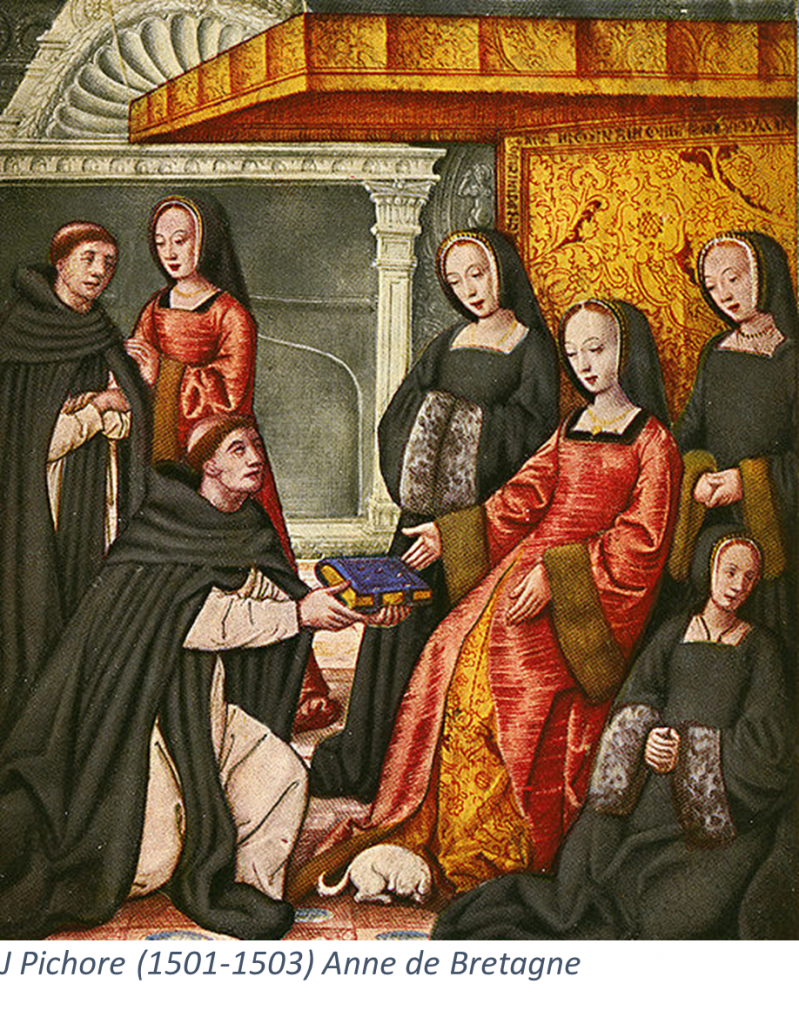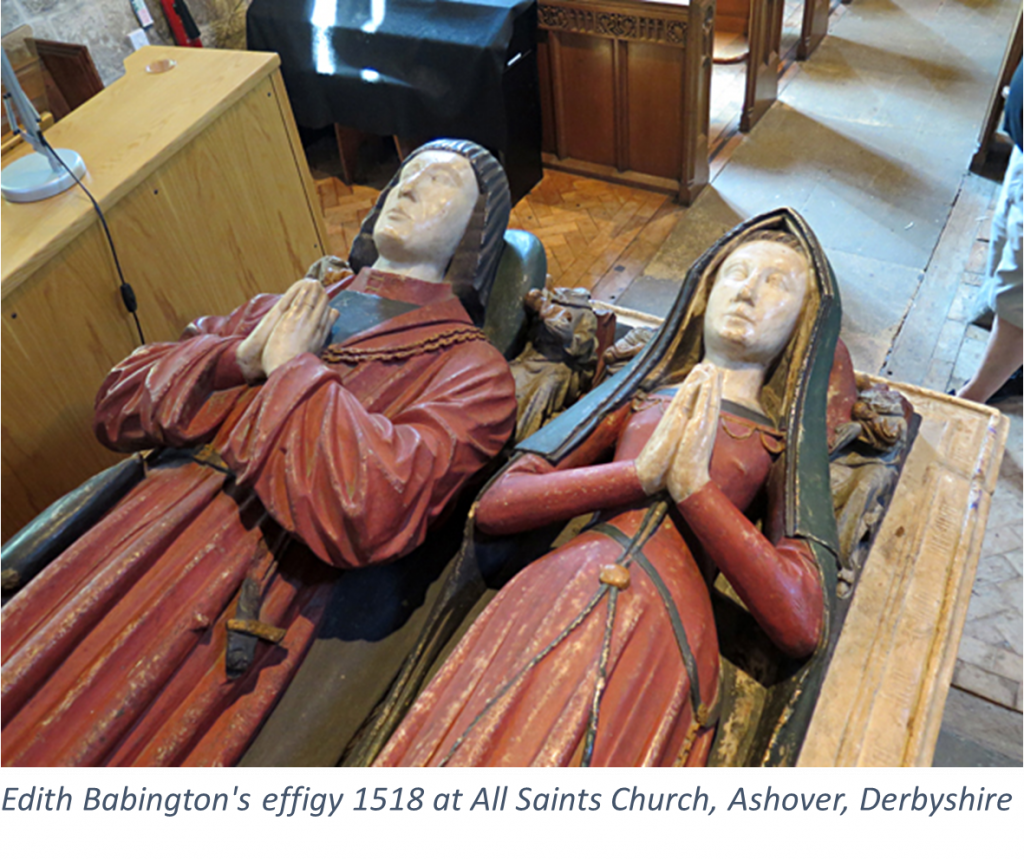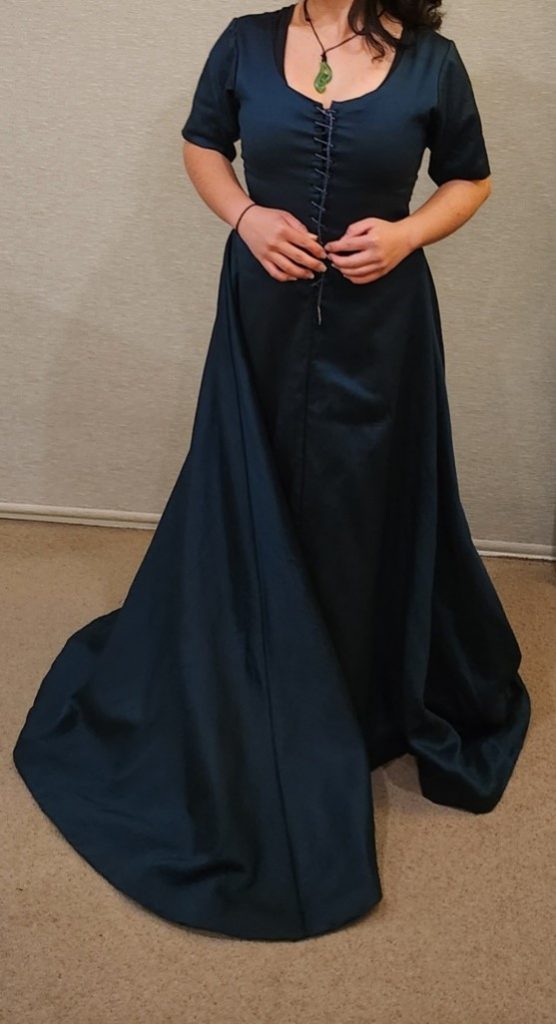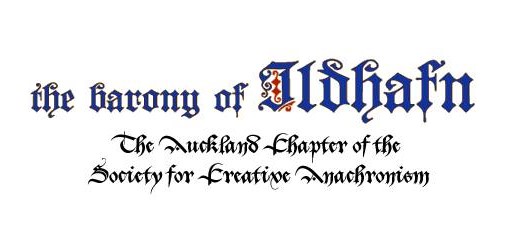Terra Firma (firm ground)
Make something using a skill or method you’re familiar with, but want to improve on
Entrant
Sigi Jade aka Rose Taillor
A girl can never have too many kirtles. I was intent on improving my historical sewing skills over this year, and have made two kirtles using the same pattern over the last few months – a green cotton and a blue silk/linen. The difference between the two shows the improvement of my skills and growing confidence in sewing historically. I present the two kirtles to this challenge.
Justification
I used a Tudor Tailor pattern, from their book The Queens Servants. It was a pattern for the early Tudor period. It was technically a gown pattern, but at this time, the gown and kirtle were very similar in pattern, with the key differences being in fabric choice and a few design differences; gowns had larger sleeves of differing shapes and lower necklines, whereas kirtles tended to have long sleeves, close to the wrist.
I selected it because it used a long sweeping skirt shape, rather than gore insertions, and I liked the unbroken line (and reduced seams, meaning less dratted felling.)
Below are two of the sources the Tudor Tailor cited in the patterning of their gown.


I was initially going to make the first one a kirtle, and the second one a gown to go over-top. However, I quickly realised that this would be far too warm for the Crescent Isles, and impractical for my usual activities at an event, so I committed to both as kirtles. The practicality was also the key deciding factor for why both are short sleeved, rather than the big turn back sleeves of period.
I really value how the SCA is a volunteer organisation, and at each event, everyone mucks in to help create the world. Cooking, carrying, assisting others, or literally any physical activity becomes quite difficult in a truly historically accurate gown. They were almost designed to be impractical; to demonstrate one’s wealth in fabric and the ability of a household to have entirely decorative women who did not have to perform any menial labour. For the lower classes, gowns were worn when doing minimal strenuous activity such as attending church or going to the market. The kirtle + shift + apron is the outfit mostly seen when women are engaging in any of the activities I usually partake in at an SCA event. Thus, I have decided to focus on making great kirtles, so I do not restrict my activities or ability to volunteer at events.
The train on both kirtles however, is entirely anachronistic for the fact they are meant to be underlayers. I have no excuse other than I really love the swoosh and find it far easier to manage a long hem over massive sleeves.

Notice that the woman in the gown is supervising, hands firmly folded in front of her, compared to the woman in a kirtle, sleeves rolled up who is collecting the blood.

Although here you can see the woman is clearly wearing a blue gown lined in yellow, tucked up to reveal a red kirtle. Maybe I just need to be more agile to avoid that boar blood!
Boggy Ground
My first attempt was to test the pattern with a sturdy green cotton, unlined. I machine sewed it with polyester thread, flat felled the seams, and felled down the hemlines. The eyelets were sewn in green silk for a spiral lacing pattern.



Firm Ground
My second attempt was in a blue silk with blue linen lining. Blue is a classic colour for medieval kirtles, as you can see in the February and June illustrations in Très Riches Heures du Duc de Berry.
The improvements I made for this dress compared to the other one included
- More historically accurate materials – silk and linen instead of cotton and polyester
- Preparation for sewing – I used copious basting stitches and thread marking to improve eyelet placement, prevent layers moving, and improving the sleeve fit.
- Flat lining – I’ve previously only ever bag lined garments, or only lined the bodice.
- Handsewing – I used black silk thread – a lot of medieval garments were sewn in different colours to the garments in period, and the shot silk made the black much less noticeable anyway. I backstitched the main seams, although I have since learnt from the below ‘Stitches of Lengberg’ video that I was actually doing a half-backstitch. The seams were trimmed and flat felled, or blanket stitched at the sides so I had the ability to let the dress out in the future.
- Reinforcement – I inserted a stabilising strip of linen at the centre front for eyelet placement to reduce the tension on those eyelets.
- Hem guard – in black polyester/wool blend to help stiffen and protect the hem.
- Improved fit – the dress is nice and snug, and the sleeves sit much closer to my arms, and still allow full range of motion.
- Patience – I estimate this dress took me over 100 hours to make. I admit that I have previously got frustrated with projects, and taken shortcuts I regretted later (see the green cotton irregular eyelet placement and lack of a facing). However, when I felt the irritation with this project mounting and was tempted to do a ‘good enough’ job, I put it aside for a day or so, and came back to it with fresh fingers. This approach allowed me to produce a kirtle I can truly be proud of!





References
The Tudor Tailor | Reconstructing 16th Century Dress
https://paradise.gen.nz/aglets/brass
The Language of Stone: All Saints Church Ashover – The Interior
Tres Riches Heures du Duc de Berry, 1412-1416 Labors of the Months from the Très Riches Heures — The Public Domain Review
Genève, Bibliothèque de Genève, Ms. lat. 33, f. 12r. e-codices – Virtuelle Handschriftenbibliothek der Schweiz (unifr.ch)
Simon Bening | Book of Hours | Netherlandish | The Metropolitan Museum of Art (metmuseum.org) f 7r
https://youtu.be/Lqy3BEBUjsA
Nicholas Zaortiga, “Scenes from the Life of our Lady,” 1465, Borja, Zaragoza, Spain. Image taken from Baroness Camilla de la Reynarde’s Pennsic University lecture; Eleanora and Maria: A Comparison of Upper Class Stockings (youtube.com)
